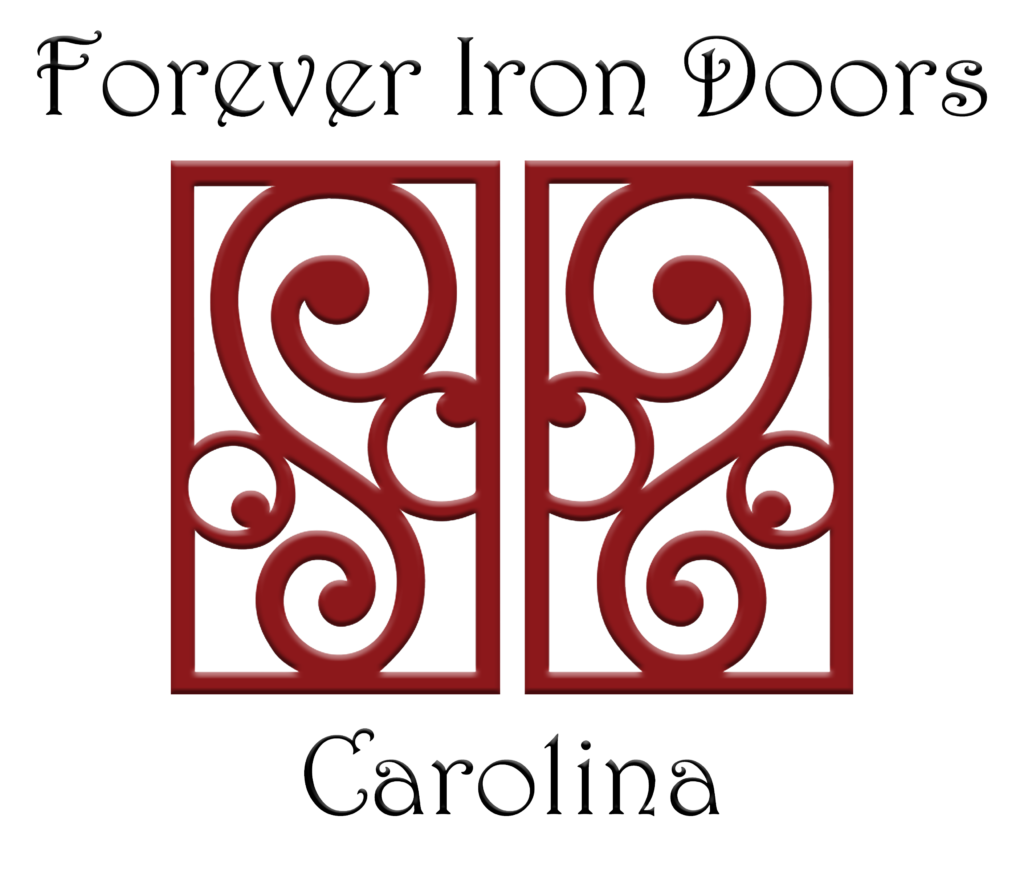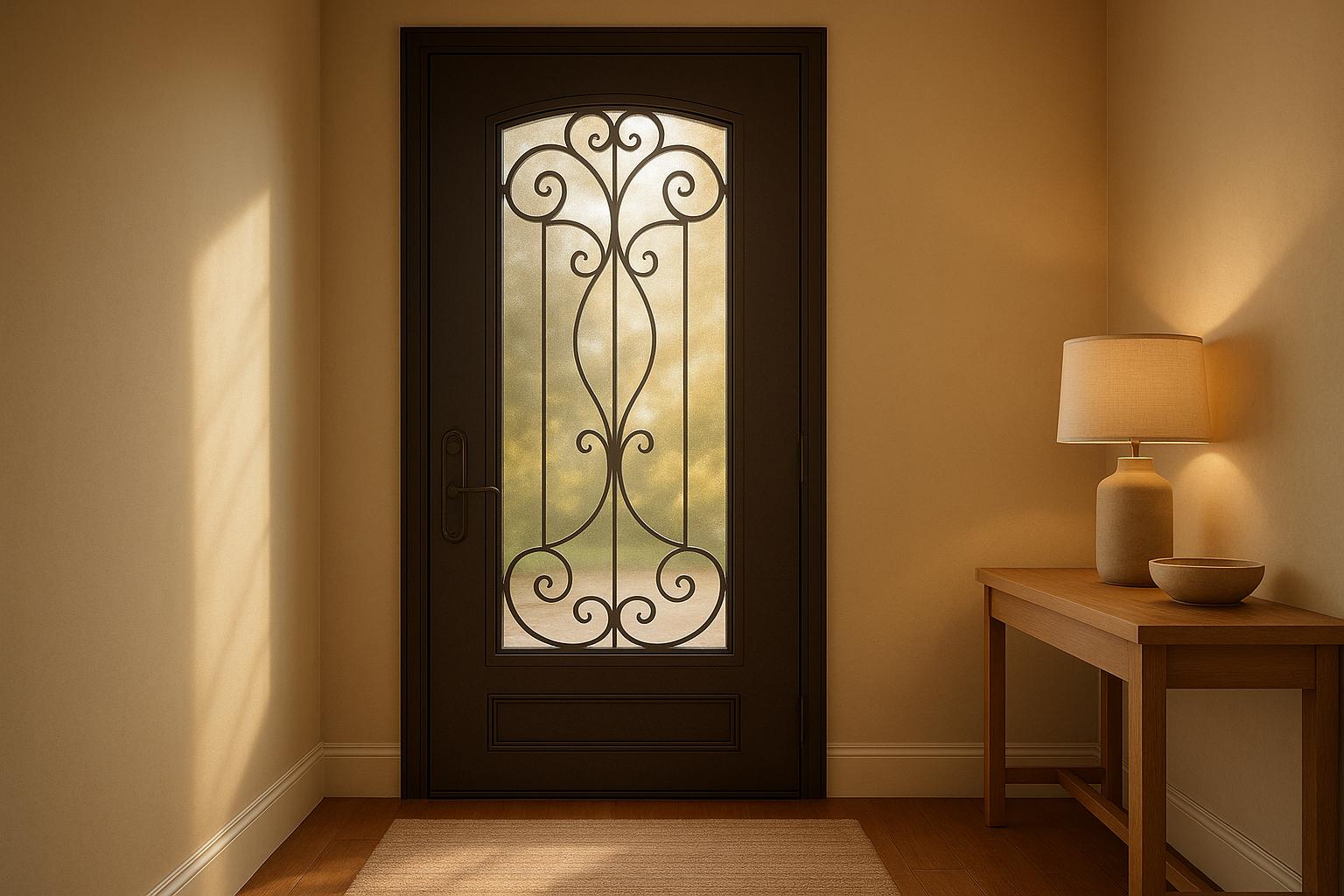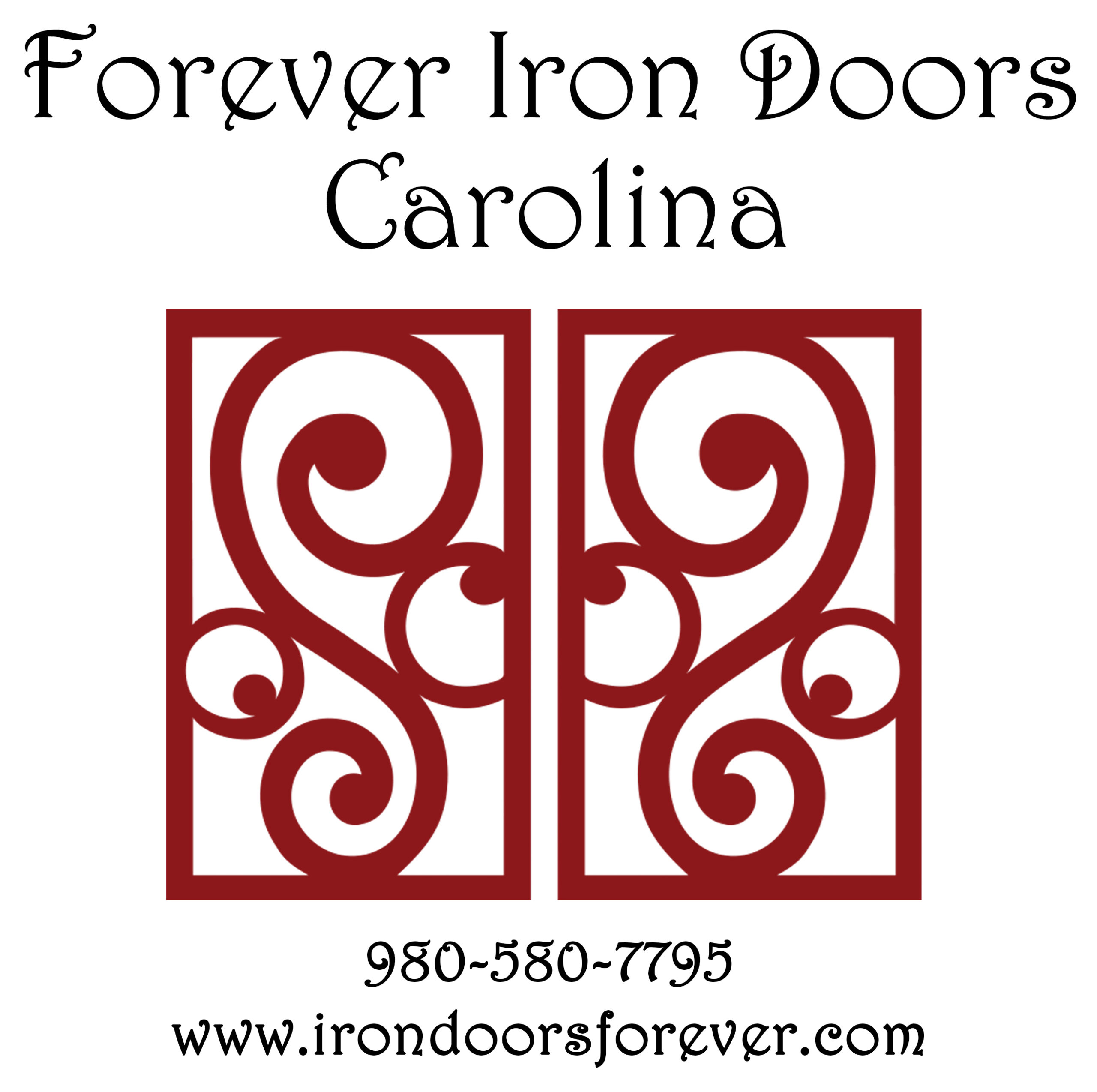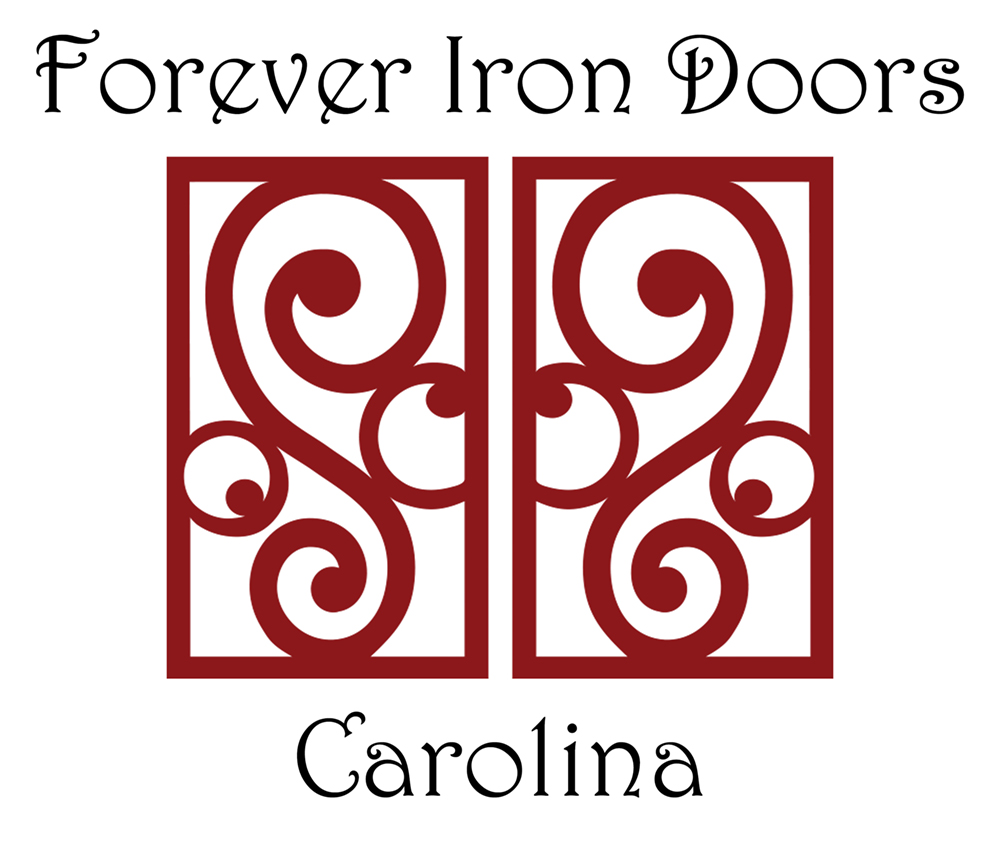When choosing glass for wrought iron doors, energy efficiency is a key consideration. The type of glass impacts insulation, energy costs, and comfort. Here’s a breakdown of the main options:
- Single-pane glass: Cheapest upfront, but offers poor insulation and UV protection.
- Double-pane glass: Adds an insulating layer with air or gas, reducing heat transfer and energy bills.
- Triple-pane glass: Superior insulation with two insulating layers, ideal for extreme climates but heavier and more expensive.
- Low-E coated glass: Reflects heat while allowing natural light, reducing energy use and protecting against UV rays.
- Laminated/Impact-resistant glass: Focuses on safety and durability with modest energy efficiency benefits.
Quick Comparison
| Glass Type | Insulation | Upfront Cost | UV Protection | Durability | Best For |
|---|---|---|---|---|---|
| Single-Pane | Low | Low | Low | Moderate | Decorative or mild climates |
| Double-Pane | Good | Moderate | Good | High | Most homes |
| Triple-Pane | Excellent | High | High | Very High | Extreme climates |
| Low-E Coated | High | Higher | High | High | Hot/sunny areas |
| Laminated/Impact-Resistant | Moderate | High | High | Very High | Storm-prone or secure areas |
For best results, combine the right glass with proper installation, thermal breaks, and weatherstripping. This ensures your iron door not only looks great but also improves your home’s energy efficiency.
1. Single-Pane Glass
Single-pane glass, the most basic glazing option for wrought iron doors, doesn’t meet the energy retention standards set by the NFRC. This traditional choice consists of a single layer of glass without any added insulation. While it does offer clear visibility and a lower upfront price, it struggles to compete with modern glazing options in terms of energy efficiency.
Insulation Value
With its low insulation capabilities, single-pane glass allows heat to pass through easily. This means your indoor spaces can lose warmth quickly during winter and heat up just as fast in summer. The result? Your HVAC system has to work harder to maintain a comfortable temperature, leading to higher energy bills.
UV Protection
Single-pane glass provides little protection against UV rays, which can cause furniture, flooring, and other interior elements to fade more quickly over time.
Durability and Maintenance
The thinner design of single-pane glass makes it more prone to damage from thermal stress and impacts. Regular cleaning and routine inspections are essential to spot chips or cracks early. Ignoring these issues could lead to the need for a replacement or even an upgrade to a more efficient glass option.
Cost Considerations
Although single-pane glass is often the cheapest option upfront, its poor insulation can lead to higher energy expenses in the long run. Many homeowners eventually opt for glass with better insulation to improve energy efficiency and reduce overall costs. Up next, we’ll explore alternatives that offer better insulation and performance.
2. Double-Pane Glass
Double-pane glass is a step up from single-pane options, featuring two layers of glass separated by a pocket of insulating air or gas. This design creates a barrier that helps regulate indoor temperatures, making it an energy-efficient choice for wrought iron doors.
Insulation Value
The space between the two panes serves as an insulating layer, reducing heat transfer and keeping your home comfortable throughout the year. When filled with inert gases like argon or krypton, this gap becomes even more effective, as these gases slow down heat movement better than regular air.
Heating and Cooling Cost Savings
With double-pane glass, you can expect noticeable savings on your energy bills. By reducing the workload on your HVAC system, it helps maintain a steady indoor temperature without overuse of heating or cooling, which translates to lower monthly costs.
UV Protection
Double-pane glass offers solid UV protection, often enhanced with coatings like Low-E or specialized glazing. This added layer of defense helps protect your furniture, rugs, and artwork from fading caused by sunlight, while also shielding you from harmful UV rays.
Durability and Maintenance
The dual-pane design is more resistant to thermal stress and impacts, making it a durable choice. Its sealed construction keeps out dust, moisture, and debris, which reduces the need for frequent cleaning. However, if the seal is compromised, moisture can seep in, causing fogging between the panes that’s hard to fix. Regular checks on the seal can help catch and address issues early.
Cost Considerations
Double-pane glass does come with a higher upfront price compared to single-pane options. However, the energy savings and improved indoor comfort over time make it a worthwhile investment. Costs can vary depending on factors like the type of gas fill, coatings, and compatibility with your door frame. Up next, we’ll look at other glass types that can further boost energy efficiency.
3. Triple-Pane Glass
Triple-pane glass features three layers of glass separated by two insulating spaces, making it a great option for homeowners looking to boost insulation and indoor comfort.
Insulation Value
The dual insulating chambers act as barriers that significantly reduce heat transfer. When these chambers are filled with inert gases like argon or krypton, they improve the glass’s ability to maintain steady indoor temperatures even further.
Heating and Cooling Cost Impact
By reducing the strain on heating and cooling systems, triple-pane glass helps cut down on energy bills over time.
UV Protection
The multiple layers in triple-pane glass also provide better protection against harmful ultraviolet (UV) rays. This helps prevent sun damage to furniture and flooring while still allowing plenty of natural light to brighten your space.
Durability and Maintenance
The layered design makes triple-pane glass more resistant to impacts and thermal stress. However, the sealed construction can pose challenges if moisture gets inside, as repairs may be more complex. Proper installation and sturdy door frames are critical to handle the added weight and ensure long-term durability.
Cost Considerations
While the initial cost of triple-pane glass is higher, it offers significant energy savings and improved comfort over the long run. Up next, we’ll look at how specialized coatings can further boost energy efficiency.
4. Low-E Coated Glass
After discussing triple-pane glass, let’s look at another way to improve energy efficiency: Low-E coated glass. This type of glass features a super-thin metallic layer – usually made from silver or tin oxide – that reflects heat while still allowing visible light to pass through. The result? A more comfortable indoor environment all year long.
Insulation Value
Low-E coatings are excellent at managing radiant heat. During winter, they help keep warmth inside your home, while in summer, they bounce external heat away. This improves the glass’s insulating ability without sacrificing natural light, as the coating blocks infrared heat transfer but still lets in plenty of daylight.
Heating and Cooling Cost Impact
By maintaining more consistent indoor temperatures, Low-E glass reduces the workload on your HVAC system. This means lower energy bills and a more efficient heating and cooling setup.
UV Protection
Low-E glass also cuts down on UV rays, which can fade furniture, carpets, and other interior items. Unlike tinted glass that darkens a room, Low-E coatings allow spaces to stay bright while still offering reliable UV protection.
Durability and Maintenance
Low-E coatings are applied during the manufacturing process, making them a long-lasting part of the glass. Hard-coat Low-E options, in particular, are built to withstand routine cleaning and exposure to the elements. To keep them in good condition, just use standard glass cleaners and a soft cloth – nothing fancy required.
Cost Considerations
Yes, Low-E coated glass costs more upfront than standard clear glass. However, the energy savings over time can make it a smart investment. By lowering energy use and improving HVAC efficiency, it can lead to noticeable financial benefits in the long run.
sbb-itb-cd90297
5. Laminated Glass and Impact-Resistant Glass
Laminated glass is made by bonding two or more layers of glass with a PVB interlayer. Impact-resistant glass takes this concept further, using thicker layers to withstand severe weather and security threats. While these glass types are primarily chosen for their safety features, they also offer some minor energy efficiency benefits when used in iron doors.
Insulation Value
The layered structure, including the PVB interlayer (and additional layers in impact-resistant glass), slightly reduces thermal conductivity compared to single-pane glass. However, these types of glass generally fall short of the thermal performance offered by options like double-pane or Low-E coated glass.
Heating and Cooling Cost Impact
Although laminated glass doesn’t deliver the energy savings seen with more advanced multi-pane systems, its layered design provides a small boost in temperature regulation. This slight improvement can help lower heating and cooling costs over time. Additionally, the thermal layering offers added UV protection.
UV Protection
The PVB interlayer is highly effective at blocking UV light, helping protect your interiors from fading and wear. This feature can preserve the appearance of furniture, flooring, and other décor elements for longer.
Durability and Maintenance
One of the standout benefits of laminated glass is safety. If it breaks, the glass fragments stick to the interlayer instead of scattering, reducing the risk of injury and maintaining some level of weather protection until repairs are made. Cleaning is straightforward, requiring only standard glass maintenance. Additionally, the laminated design provides better resistance to minor scratches and impacts. Impact-resistant glass undergoes rigorous testing to meet building code standards in regions prone to extreme weather.
Cost Considerations
While laminated and impact-resistant glass come with a higher price tag, their safety features, UV protection, durability, and modest energy savings make them a worthwhile investment for many homeowners.
Advantages and Disadvantages
Let’s break down the pros and cons of different glass types to help you make an informed choice based on energy efficiency, cost, and durability.
Single-pane glass is the cheapest option upfront, but it offers minimal insulation. While it’s easy to install, its poor energy efficiency can lead to higher utility bills over time. This type of glass is best suited for decorative purposes or areas with mild weather, where insulation isn’t a priority.
Double-pane glass finds a middle ground between cost and performance. It significantly reduces heat transfer compared to single-pane glass, providing noticeable energy savings. While it costs more initially and requires careful installation, the long-term savings often make up for the higher price within a few years.
Triple-pane glass provides the best thermal insulation, making it ideal for extreme climates. However, it comes with a higher price tag and added weight, which might require reinforced door frames. For moderate climates, the extra cost may not be worth the added efficiency.
Low-E coated glass reflects heat while allowing natural light to pass through, making it a solid choice for hot or sunny areas. Although the coating adds to the cost and requires careful cleaning with non-abrasive products, it effectively reduces heat transfer and blocks harmful UV rays.
Laminated and impact-resistant glass focuses on safety, offering superior protection against breakage. While it’s more expensive due to its specialized production process, this glass is ideal for storm-prone areas or situations where security is a top concern.
Here’s a quick comparison to summarize the key differences:
| Glass Type | Energy Efficiency | Upfront Cost | Durability | Maintenance | Best For |
|---|---|---|---|---|---|
| Single-Pane | Poor | Low | Good | Easy | Budget-friendly projects, mild climates |
| Double-Pane | Good | Moderate | Very Good | Moderate | Most residential applications |
| Triple-Pane | Excellent | High | Excellent | Moderate | Extreme climates, premium builds |
| Low-E Coated | Very Good | Slightly Higher | Good | Careful cleaning needed | Hot/sunny climates, UV protection |
| Laminated/Impact-Resistant | Fair | High | Excellent | Easy | Security, storm-prone areas |
One important consideration is the weight of certain glass types. Triple-pane and impact-resistant glass are heavier, often requiring reinforced door frames to support them.
Climate is another key factor when choosing glass. In areas with extreme temperature fluctuations, high-performance options like triple-pane or Low-E coated glass can offset their higher upfront costs with energy savings. For moderate climates, double-pane glass with a Low-E coating often strikes the best balance between cost and efficiency.
Maintenance needs also vary. Standard glass requires basic cleaning, while Low-E coatings demand extra care to maintain their reflective properties. Laminated glass, on the other hand, offers the advantage of staying intact even when cracked, reducing the urgency for immediate replacement.
Custom Glass Options from Forever Iron Doors Carolina
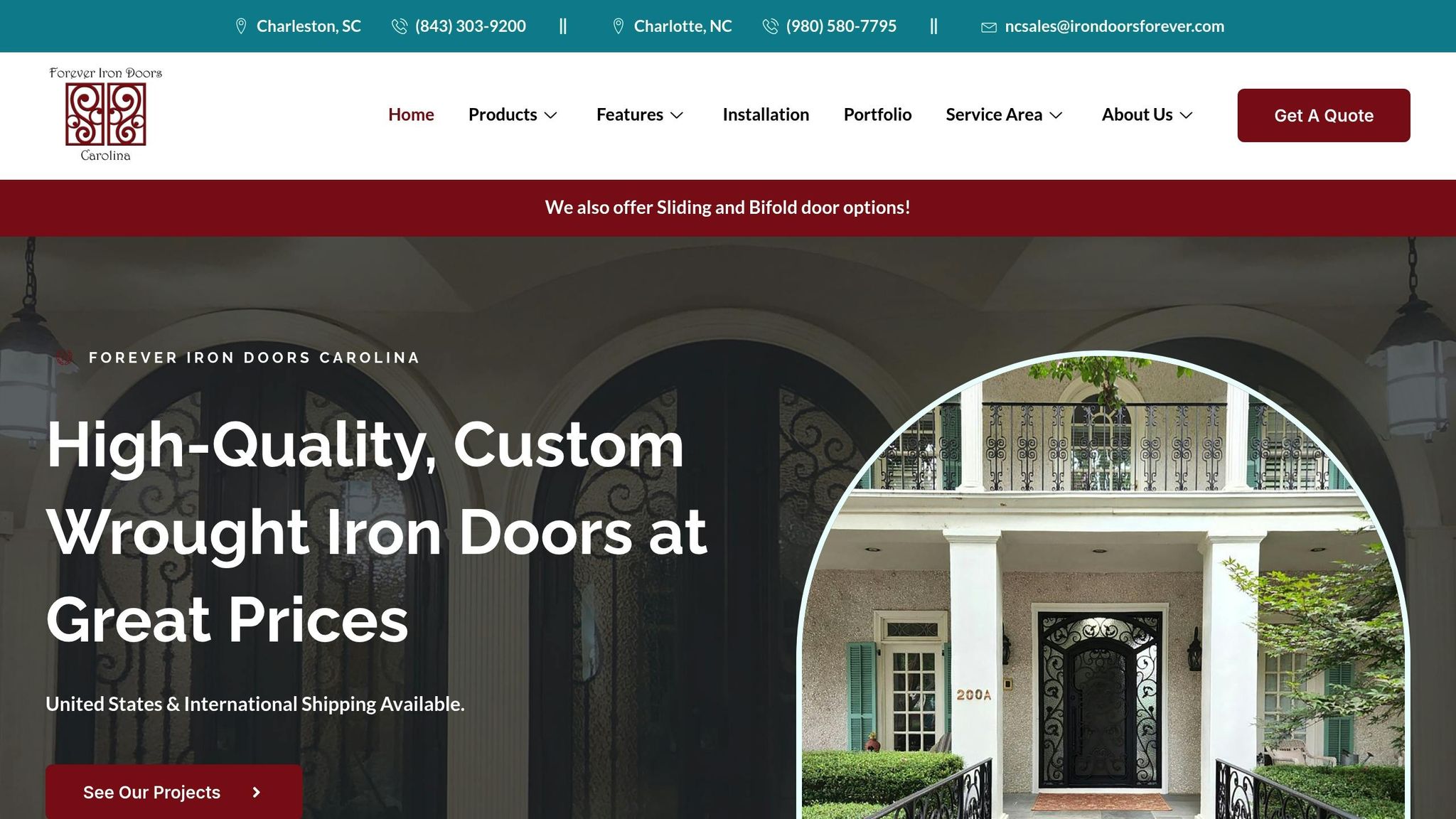
Forever Iron Doors Carolina knows that selecting the right glass for your wrought iron door is about finding the perfect balance between energy efficiency, style, and durability. With a variety of glass options available, they help you achieve the best performance for your home, no matter the climate. Their process ensures a seamless blend of design and functionality.
Their custom design services let you choose the glass type that best suits your energy-saving goals. Options include double-pane glass for moderate insulation, triple-pane glass for superior temperature control, and Low-E coated glass, which excels at reflecting heat during hot summers. Whatever your needs, their fabrication team can tailor solutions to match.
Local climate plays a significant role in their recommendations. For homes in areas with extreme temperature swings, high-performance glass can make a noticeable difference in maintaining comfort. In coastal regions across the Carolinas, where humidity and severe weather are common, laminated or impact-resistant glass adds both security and durability to your door.
Expert installation is key to ensuring your energy-efficient glass performs as intended. Their team focuses on proper sealing, framing, and alignment to preserve the glass’s insulating benefits. For heavier glass types, they also provide structural framing services to ensure stability and long-term performance.
To further enhance energy efficiency, they coordinate hardware choices like weatherstripping during the design phase. This ensures that your door operates as a fully integrated system, maximizing its performance.
For those who want to elevate their door’s appearance, faux painting services are available. These finishes add character without compromising the door’s functionality, making decorative glass panels framed by ironwork an eye-catching centerpiece.
For energy-conscious homeowners, Forever Iron Doors Carolina offers a detailed analysis of the long-term cost benefits of different glass options. By considering your home’s location and orientation, they can show how investing in premium glass upfront can lead to lower heating and cooling costs over time.
Whether you’re upgrading a home for energy efficiency or tackling a commercial project that prioritizes durability and security, they tailor their glass recommendations to fit your needs. For example, residential installations often emphasize aesthetics and energy savings with Low-E coated double-pane glass, while commercial projects focus on robust, impact-resistant options.
From the initial design phase to final installation, their team works with you every step of the way. This comprehensive approach ensures that your glass selection complements both the door’s structure and your home’s architectural style, delivering a result that’s as functional as it is visually appealing.
Conclusion
When selecting energy-efficient glass for your wrought iron door, double- or triple-pane glass with Low-E coatings is a smart choice. These designs trap air or inert gases like argon between the panes, offering excellent thermal resistance.
Low-E coatings take things a step further by reflecting infrared energy. This means your home stays warmer in the winter and cooler in the summer, helping to maintain a comfortable indoor temperature year-round.
But it’s not just about the glass. A well-designed and properly installed door system is essential for maximizing energy efficiency. This is where working with specialists makes all the difference. Experts can ensure that all components, from thermal breaks to weatherstripping, are seamlessly integrated for optimal results.
By combining advanced glass technology with professional installation, you create a door that not only saves energy but also enhances the overall look of your home. Companies like Forever Iron Doors Carolina specialize in crafting these fully integrated systems, ensuring every detail contributes to energy savings.
For homeowners in the U.S., investing in premium glass options can lead to noticeable savings on utility bills. With the right combination of materials and expertise, your wrought iron door becomes more than just an entryway – it’s a long-term investment in both style and energy performance.
FAQs
What should I know about choosing between double-pane and triple-pane glass for my wrought iron door?
When choosing between double-pane and triple-pane glass for your wrought iron door, it’s essential to weigh factors like insulation, energy efficiency, and cost. Triple-pane glass provides better insulation by minimizing heat transfer, which can lead to noticeable savings on energy bills over time. While it does come with a slightly higher upfront cost – about 10–15% more – the added comfort and potential long-term savings often make it a smart choice.
Both options can feature Low-E coatings, which boost energy efficiency by reflecting infrared heat. This coating helps maintain a comfortable indoor temperature, keeping your home cooler in the summer and warmer in the winter. Whether you opt for double-pane or triple-pane glass, either can be tailored to your preferences. Companies like Forever Iron Doors Carolina offer a variety of glass options designed to match your style and energy efficiency goals.
How does Low-E glass enhance the energy efficiency of wrought iron doors?
Low-E glass, short for low-emissivity glass, is designed to improve energy efficiency by reducing heat transfer. Thanks to its specialized coating, it reflects heat back into your home during winter and keeps it out during summer, helping maintain a comfortable indoor temperature throughout the year.
This type of glass can cut energy costs by as much as 30–50%, making it an appealing option for homeowners aiming to save on heating and cooling expenses. Beyond the savings, Low-E glass outperforms standard glass in thermal insulation and limits solar heat gain, offering a more efficient and comfortable living environment.
What maintenance is needed for energy-efficient glass in wrought iron doors?
To keep the glass in wrought iron doors energy-efficient, regular cleaning is key. Use a gentle solution, like a mix of water and vinegar, to avoid scratches while removing dirt and grime. This simple step helps maintain the glass’s clarity and appearance.
It’s also a good idea to check the seals and weatherstripping from time to time. Intact seals not only prevent air leaks but also help maintain proper insulation, ensuring the door stays energy-efficient.
For glass with low-emissivity (Low-E) coatings, upkeep is relatively simple. These coatings work by reflecting infrared and UV rays, improving energy efficiency. To keep them functioning at their best, make sure the surface stays clean with regular, careful cleaning.
